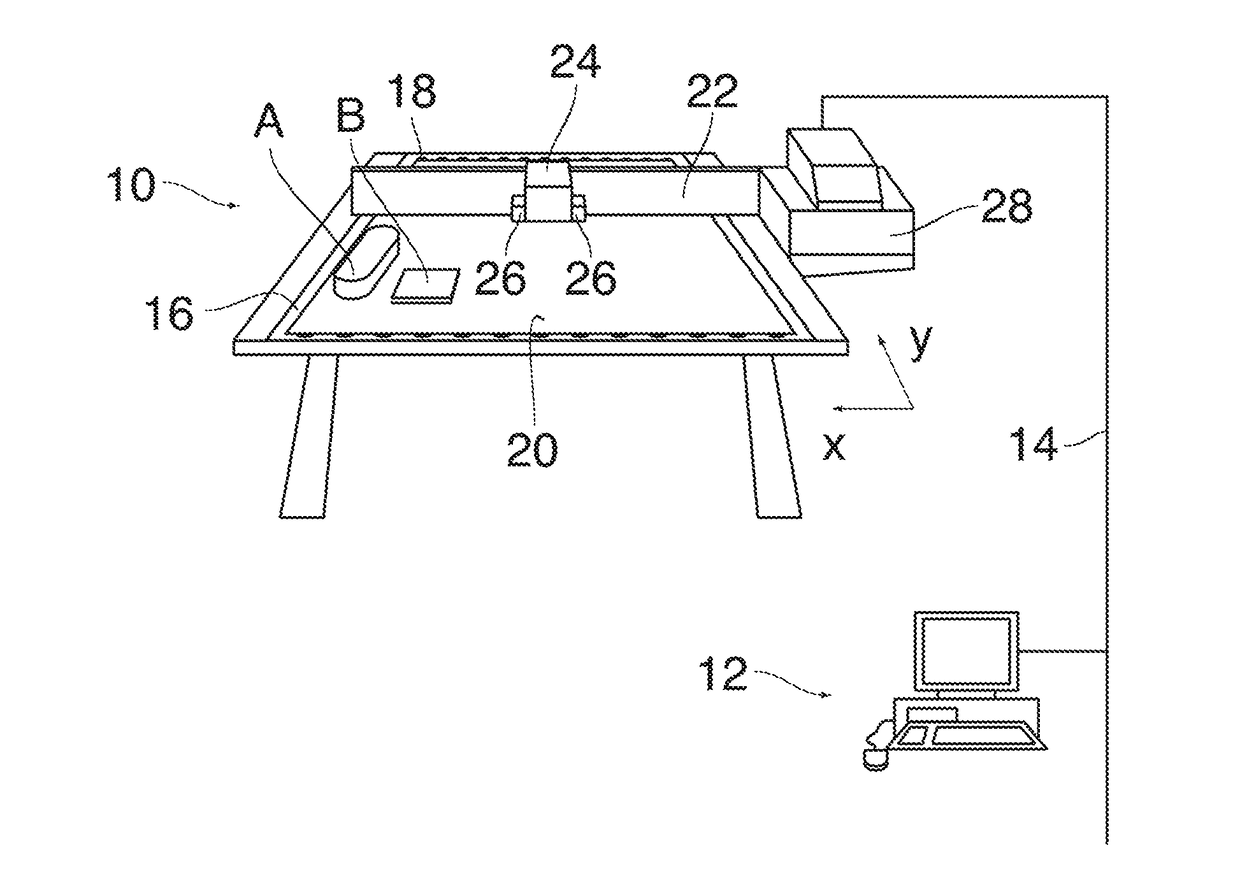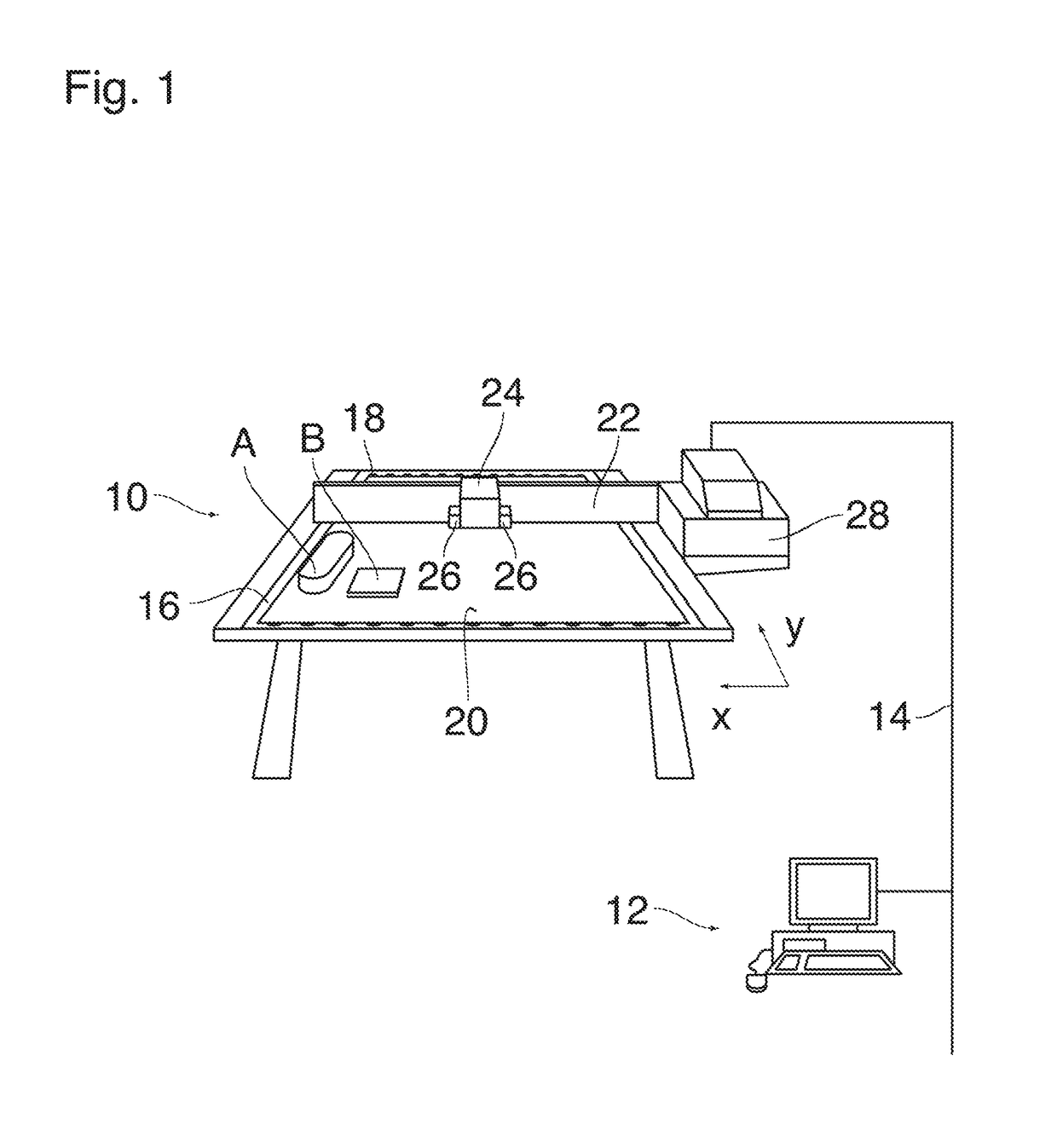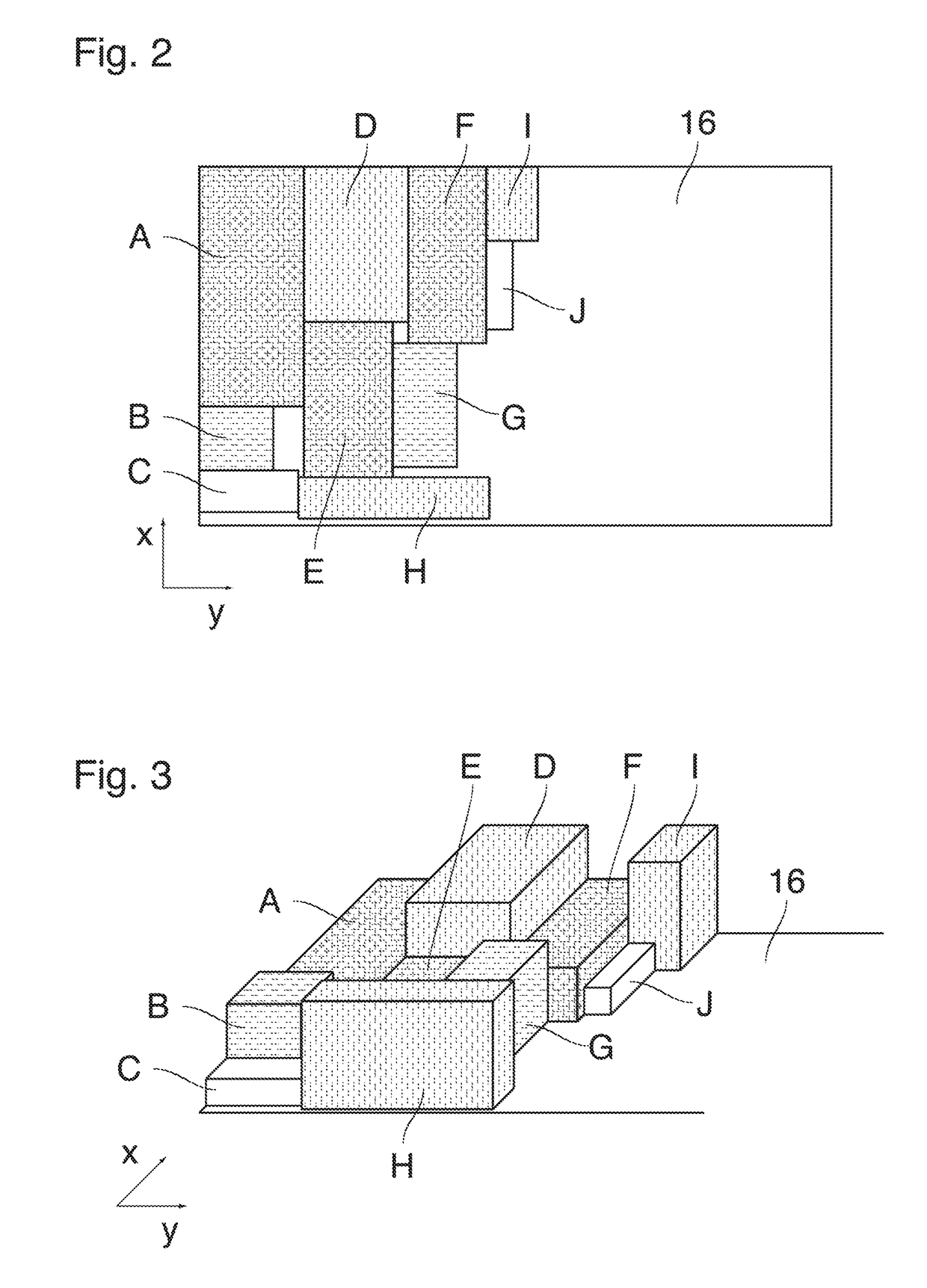Method of nesting three-dimensional print objects
a three-dimensional print object and print object technology, applied in the field of three-dimensional print object nesting, can solve the problems of observed quality issues, observed quality issues, and inverse correlation of prior art quality issues with the height of printed objects, so as to achieve the effect of reducing curing intensity, reducing curing intensity, and reducing the quality of printed objects
- Summary
- Abstract
- Description
- Claims
- Application Information
AI Technical Summary
Benefits of technology
Problems solved by technology
Method used
Image
Examples
Embodiment Construction
[0027]FIG. 1 shows a printing system comprising a flat bed printer 10 and a workstation 12 connected to the printer via a network 14 and permitting to compile and edit print jobs to be executed with the printer 10.
[0028]The printer 10 has a flat bed with a rectangular print surface 16 in which a regular pattern of suction holes 18 has been formed. The suction holes are connected to a vacuum source, so that a print substrate 20, e.g. a rectangular sheet of paper, can be sucked against the print surface so as to be immobilized on the flat bed.
[0029]A gantry 22 extends across the print surface 16 in a main scanning direction x and is itself movable relative to the print surface in a sub-scanning direction y. A print head 24, e.g. an ink jet print head, is driven for reciprocating movement along the gantry 22 in the main scanning direction x and is controlled to eject a curable ink, e.g. UV-curable ink, onto the print substrate 20 in several superposed layers so as to form three-dimensi...
PUM
| Property | Measurement | Unit |
|---|---|---|
| size | aaaaa | aaaaa |
| surface area | aaaaa | aaaaa |
| constant width | aaaaa | aaaaa |
Abstract
Description
Claims
Application Information
 Login to view more
Login to view more - R&D Engineer
- R&D Manager
- IP Professional
- Industry Leading Data Capabilities
- Powerful AI technology
- Patent DNA Extraction
Browse by: Latest US Patents, China's latest patents, Technical Efficacy Thesaurus, Application Domain, Technology Topic.
© 2024 PatSnap. All rights reserved.Legal|Privacy policy|Modern Slavery Act Transparency Statement|Sitemap



